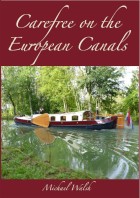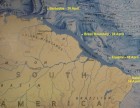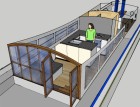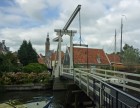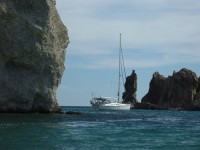Sequitur
Michael & Edi have headed out on a slow, thorough exploration of the globe.
| Vessel Name: | Sequitur and Zonder Zorg |
| Vessel Make/Model: | 2007 Hunter 49 and 1908 Wildschut Skûtsje |
| Hailing Port: | Vancouver, Canada |
| Crew: | Michael Walsh & Edi Gelin |
| About: | For our current location click, on Map & Tracking, then on the Google Earth logo. |
| Extra: | Follow us on Twitter: Follow @YachtSequitur |
| Social: |
13 January 2014
Another New Book Released
I am delighted to announce that my new book: Carefree on the European Canals is now in print and is available on Amazon.com, Amazon.ca [...]
26 April 2013
New Book Released
The proof copy of my new book arrived by courier today. I have approved it and it is now listed on Amazon for pre-order, with a publication date of 30 April. It is a rather large book at 680 pages in an 8.5 by 11 inch format with 315,000 words illustrated by over 2400 colour photos, charts and maps. [...]
24 April 2013
One Year Out of Brazil
One year ago today we sailed Sequitur out of Brazil after enduring more than six weeks in the least-friendly country that we had experienced during our three-year voyage. In the early evening of 24 April 2012 we crossed the line on the chart dividing Brazil from French Guyana and breathed a huge sigh [...]
27 October 2012 | Harlingen, Friesland
Planing a Metamorphosis
We have added a new post to the Zonder Zorg blog at: Planing a Metamorphosis.
29 September 2012 | Sneek, Netherlands
Onward to Friesland
We have arrived in Friesland and have added a new post to the skûtsje's blog at: Onward to Friesland
19 September 2012 | Hoorn, Netherlands
North From Aalsmeer
We have moved northward from Aalsmeer and I have added two new posts: Heading North From Aalsmeer and North From Amsterdam
13 September 2012 | Aalsmeer, Netherlands
Taking Possession
We are back in the Netherlands, and I have added some new posts to the ZonderZorg blog at: Taking Possession and Settling-In and Making Plans
20 August 2012 | Sequitur: St Augustine, USA - Michael & Edi: Vancouver, Canada - Nieuwe Zorg: Aalsmeer, Netherlands
Added a New Website
We have added a new website: Skûtsje ZonderZorg. Zonder zorg in Dutch means without worry. Our intention with the site is to provide a place to share some of the history, geography and culture of the skûtsje as we discover it. We will also use this place to document [...]
11 August 2012 | Sequitur: St Augustine, USA - Michael & Edi: Vancouver, Canada - Nieuwe Zorg: Aalsmeer, Netherlands
Still More Skûtsje History
We continued to attempt to track-down Douwe Albert Visser, who was the owner of Nieuwe Zorg in 1941 when she was re-registered. One of the problems we repeatedly encountered in our online searches was the effect of currently having Albert Visser and two Douwe Vissers as very competitive skûtsje racers, [...]
10 August 2012 | Sequitur: St Augustine, USA - Michael & Edi: Vancouver, Canada - Nieuwe Zorg: Aalsmeer, Netherlands
Some More Skûtsje History
While I was researching the history of Nieuwe Zorg, I finally found her first registration details obscured by an apparent typographical error in a transcribed online spreadsheet. She was listed as having been built in 1901 instead of 1908. I emailed the webmaster of the [...]
Brazil Nuts
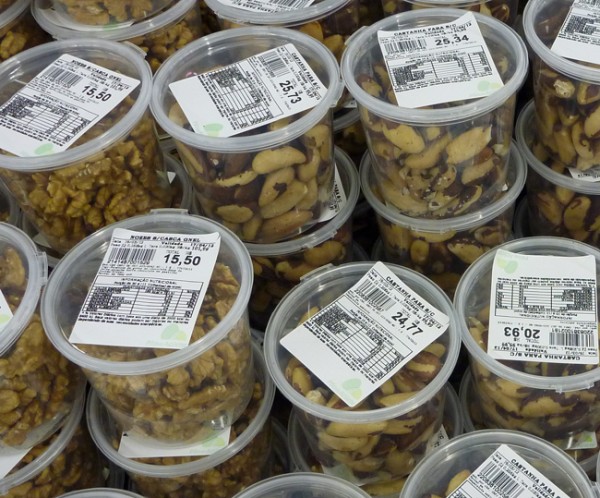
We didn't feel like backtracking to Uruguay's capitol by boat to spend a week getting visas for Brazil. We had read and heard that foreign cruisers are not very welcome in Montevideo and that Piriapolis is preferred. We decided to head along the coast of Brazil with no visas and see what evolved, and our exit papers were issued for passage from Uruguay to Canada.
We were still unsure of our onward route as we left. From Piriapolis it is about 3600 nautical miles to Cape Town, but we still needed repairs. Online I had found a Lewmar dealer listed in Rio de Janeiro, but my emails to them had bounced. It is a bit over 1000 miles to Rio, and we could put-in there without visas, claiming a need for repairs. From there it is 3300 miles to Cape Town. Alternatively from Rio, it is 2600 to the Cape Verde Islands. From there we could head via the Canaries or the Azores 1600 or 2400 miles to Europe. Another thought was that if we couldn't get repairs in Rio, it is 3600 miles around Brazil through the Windward Islands to Puerto Rico, where there is a Hunter dealer, and it is only another 1100 miles through the Bahamas to Saint Augustine, Florida and access to the Hunter factory.
It was blowing over 35 knots when we left the marina at 1000 on Saturday the 10th of March, but rather waiting for the squalls to pass we obeyed the moorage cutoff time so we wouldn't face paying an additional day's moorage and having to deal again with Miss Dayglow, the office manager.
We headed out with half the staysail and a third of the main, making near 8 knots. Within an hour the winds were a more reasonable 18 to 20 knots and we enjoyed a beam reach into the early afternoon, by which time the wind had backed to west and decreased to 12 knots. We continued into the night under various sail and motor-sail combinations as the winds dictated. On Sunday morning we set our clocks off Daylight Saving back to Standard Time, Zone -3.
For the next few days we rotated through all three sails out full and pulling, briskly moving with main and spinnaker, ghosting along under spinnaker alone, pounding along with deeply reefed main and staysail and motor-sailing with a blade of main for stability. We passed through everything from calms to 45-knot squalls, but mainly the winds were from the north-easterly sector and contrary to our track. We were; however, moved along by the northeast-setting Falklands Current.

There was an almost daily series of squalls, which we could easily track on the radar and try to avoid. Many were impossible to escape, so for them we hunkered-down for their torrential downpours and their twisting gales.

On the 15th of March we lost the assistance of the northeast flowing Falklands Current and we began running against the southwest set of the Brazil Current and into very sloppy seas. The clew on the staysail parted as the sail luffed and flopped in the light winds and confused seas.

This appeared to be an identical failure to the one we suffered with the main on the south coast of Peru during our passage to Chile in December 2010.

Again, it looked like the thread on the bobbin was rotten; each stitch of the bobbin thread was broken, while the upper thread remained intact. I rolled-up the staysail and put a running lash around it, deferring to later its restitching. We now had three very legitimate reasons to head into Rio: a broken windlass, a malfunctioning chart-plotter and a blown sail.

When the seas allowed, we dined in style in the cockpit. We were still enjoying the farm-fresh eggs Sibie had gotten for us in the Falklands, as well as the wonderful back bacon, crumpets, Roma tomatoes and basil we had bought there.

We passed through offshore oil fields in very deep water, in places over 1000 metres deep and over 100 miles offshore. It appears the Brazilians have mastered deep water oil extraction. Either that, or they accept the portion that is recovered and ignore that which is spilled.

We continued to be plagued with squalls, and generally proceeded with shortened sails, incase one popped-up out of the blue. Though with nearly constant fully overcast skies, there was very little blue, and the downpours suddenly appeared from the jumble of nimbostratus above us.

Most of the squalls were predictable, painting strongly on the radar screen as they tracked toward us, or occasionally past us without hitting.

With sunset, we were left to tracking the parade of storms by radar, aided by the rattle of wind and the rush of cold air that preceded a hit.

Between the squalls we were able to maintain our diet. I baked a spinach and cheese pie for dinner on our seventh day out.

We enjoyed slices of it in the cockpit during a lull between squalls. We were averaging daily runs of near 100 miles, and anticipated another three days to Rio.

We knew we were approaching the Tropics when we began finding flying fish on the decks.

Thankfully we didn't need to resort to eating deck pickings; our fridges, freezers and pantry were full of a wonderful selection of food. One morning, after her post-watch sleep, Edi prepared for brunch some delicious ham and egg quesodias, which we enjoyed with our fresh-ground Starbucks in the cockpit.

Our sunrise on the tenth day illuminated the skyline above Ipanema and Copacabana Beaches as we approached the entrance to Rio de Janeiro's harbour. We looked forward to exploring this fabled area.

We motored into the harbour through filthy water, which was full of floating garbage, reeked of spilled oil and had a sickly yellow-brown colour. Christ The Redeemer looked down on this from the peak.

We had been calling Rio Port Control every 5 or 10 minutes for nearly two hours as we approached and entered the harbour, all without any response. VHF Channel 16 was cluttered by chatter, catcalls, whistles and other nonsense of the local fishermen. It appeared to us that the Brazilian authorities had completely lost control of the radio frequency, and it was likely not monitored by them. We headed to Marina Gloria, which is listed as the most convenient place to clear-in. However, the printed and online reports warn that it is not at all friendly to foreign cruisers.

We tried many times without success to raise Marina Gloria on VHF, then we entered the marina and circled for nearly half an hour trying to attract attention. Everyone ashore ignored us. We saw no convenient place to moor, so we headed out and across the harbour to Niteroi. There, at 0931 we came to 20 metres on the Delta in 5 metres of water a couple of cables off Clube Naval Cheritas.

It was Tuesday the 20th of March, the last day of summer. In ten days we had covered 1026 nautical miles in mostly contrary conditions and we were finally back into the Tropics, having crossed Capricorn at 2121 the previous evening. We were weary, so we went below and slept.

On Wednesday morning after a hearty breakfast from our Falklands stores, we gathered our papers and launched the dinghy. It was a short distance to the marina, so we decided to row, rather than lowering and fitting the motor.

In the marina we tracked-down a guard, who directed us to the marina office. There we inquired about clearing-in, and we were given two sheets of paper. One was a description in English of the sequence of the three offices we needed to visit, with their addresses and transportation information. The other was an application for temporary moorage, which first needed our clearance completed.
I was fascinated by the moorage charges. The first three days are charged at 21.79 Reais, about $12 per day; days 4 to 15 are charged at R$43.58, about $24 per day; days 16 to 30 are R$63.32, about $36 per day; days 31 to 60 are R$84.92, about $47 per day; and days 61 to 90 are R$118.54, about $65 per day. This definitely shows they do not want transients to stay very long. They had a similar sliding scale for anchoring fees, from R$12.74 to R$63.70 per day, so it seems they have somehow claimed anchoring rights in the large bay, though where the line is we couldn't tell. For financial considerations, we assumed Sequitur was outside it.
We walked along waterfront to the fast ferry terminal, a kilometre or so from the marina. The gauge there told us it was 34º as we mined the ATM for some Brazilian Reais. Passage for the 20-minute ride across to downtown Rio is R$12 each on a rather modern, very fast catamaran with comfortably upholstered seating for, I would guess, some 300 passengers.

Off the ferry in downtown, we walked past some imposing old buildings, looking for directions to Praça Maua. It was lunchtime, and the sidewalks were alive with scurrying people. There was an upbeat vibrancy to the city. We asked directions and followed more the wagging hands than the nearly incomprehensible Portuguese, though with our truncated Spanish and my French we managed to unravel a few words.

We walked past many examples of throw-everything-into-it architecture. The traffic in the streets was near-gridlock, and the thoughts of a spinning meter in a crawling taxi put a ride out of mind. Besides, we enjoy walking.

With a round-about detour because of construction for the 2016 Olympics, we arrived after 2.5 kilometres at the cruise-ship passenger terminal at Warehouse 1. Inside we were directed to a desk, where we were given visitor passes and escorted through to the Federal Police office.
We were shown to seats and asked to wait for an English-speaking officer to arrive. When half an hour later he arrived and we had explained to him our diversion to Rio to seek repairs, he was sympathetic. He began going through what appeared to be a procedures manual, but there seemed to be a conflict between him and a colleague, who kept his back to us. We sensed office politics, but eventually our side won, and our passports were stamped with 15-day visas to Brazil. One office down, two to go.
Outside we happened to spot a 100 Niteroi bus stopped in a traffic snarl. I knocked on the door and we were admitted and paid our R$2.75 each for the ride across the harbour bridge to the bus loop in downtown Niteroi. We followed wagging arms to Plaza Shopping, our clue to the location of Receita Federal, our office number two. A couple more requested directions and we zeroed-in on Rua Almirante Teffe and the office at 668.
Inside we added ourselves to the queue in front of the information counter. When our turn came, we were asked to wait for an English-speaking person, and when she arrived, she took our information to her "superior". She returned shortly and asked us to follow her to the 6th floor, but I was stopped by the guard because I was wearing Bermuda shorts; men are forbidden to wear them in federal offices. Edi's shorts were OK, so she went up.
On the 6th floor, Edi waited for 20 minutes for a woman to come out of the coffee room to meet her. She was then insulted and chastised for being in the wrong office; we should have checked-in in Rio. She said that she could confiscate our boat. Edi explained that we had attempted to get arrival instructions as we came into the harbour, but with repeated calls, received no response on the radio. The woman stated that they cannot be expected to respond to foreign yachts at night and on the weekend. Edi told her that this was during office hours on Tuesday morning. The woman fumed. Edi asked her how we could rectify the situation and then she watched as four people met in heated discussion. Finally after 20 minutes, a sympathetic employee apologized as he gave Edi the downtown address. It was late afternoon, the temperature was still in the mid 30s, so we caught a 33 bus back to Sequitur.

On Thursday morning, our third day in Rio we went ashore again for another attempt at being cleared by office two. As we walked through the gate at the ferry terminal, the display showed the temperature at 34º and the time 0942. It was going to be another hot day. It was still rush-hour; there were only a few open seats when we boarded, and the ferry soon filled to capacity.

We had with us the new address, and also in my camera some photos of its location from the GoogleMaps application on my iPad. We walked the half kilometre or so to the building seeking what shade we could against the blazing sun. Inside we were issued visitor passes and directed to an elevator to the 9th floor, where we met the first elevator operator we have seen in decades.

We waited in the air-conditioned comfort of Sala 911 for an English-speaking agent. He arrived and was puzzled why we had been sent to his office. He asked who had sent us, and Edi described the encounter of the previous afternoon. He said he needed to make some phone calls and went away. After what seemed half an hour, he reemerged and very apologetically told us we need to go to Warehouse 13/14 on the commercial waterfront. He said it was the only place cruisers can clear in. I suspected this was further along from Warehouse 1, where we had been the previous day for Immigration, and he confirmed this. He then gave us a printed map image from the computer.

We headed out into the upper-30s temperature and walked the familiar route through downtown to Praça Maua and Warehouse 1. We had attempted to go the short way past the construction by following the busy waterfront walkway, but because it passed in front of the naval base, I was refused admittance in my Bermuda shorts.

Once past the spiffied-up cruise-ship terminal, the waterfront decays rapidly into crumbling ruins, derelict buildings and derelict people living in nooks in the rubble. Compounding the decay is the noise and dust of six lanes of traffic roaring by beside us and six lanes on the elevated roadway above. It reminded us of what Seattle has made of their waterfront and made us appreciate even more the superb evolution of Vancouver's.

After 5.7 kilometres through the sweltering heat, we arrived at our third office of Recieta Federal. We explained our situation and showed our papers to a very sympathetic English-speaking officer and we were asked to wait. We sat outside in the heat, but fortunately in the shade for nearly an hour before they took pity on us and asked us to come inside their air-conditioned office. As a heated discussion on our case took place in another office, we sat next to an array of stamps and stamp pads. We could use them to clear ourselves in, or we could even setup our own little Latin American bureaucracy.

Finally, after another half hour we were told they couldn't clear us in with our boat in Niteroi. If we wanted them to clear us, we needed to bring Sequitur to Marina Gloria. We explained our attempts to contact Marina Gloria on Ch 16, and the agent went to his computer and printed a page from Gloria's website. He then said they monitor Channel 68. I pointed-out that it really read that they monitor Ch 16 and 68. He tried to phone the marina for us, but he received no answer. We thanked him for his assistance and we went out onto the road to flag-down a 100 bus to Niteroi.
At the Niteroi bus loop we caught a 33 bus toward Jurujuba, the one that goes past Clube Naval Charitas. We had been in a couple of disappointing supermarkets the previous day, but then on our ride from Niteroi to Cheritas, we had passed what looked like an upscale supermarket at the edge of Enseada de Icari. We had decided to stop on our way back from Rio, and had brought a cooler bag and assorted shopping bags incase it proved to be good.

The market is called Pao de Acucar and is part of the Sendas group. It is beautifully laid-out with broad diagonal aisles in the centre and very spacious produce, bakery, meats, deli and other focus areas around the periphery. It immediately reminded us of the wonderful Wong store in Miraflores, Peru. There appeared to be nearly every food item one might want if cost were no object. The shitaki mushrooms at $48 a kilo were not tempting, but the very fresh portobellos at $9 per kilo certainly were. We gave a pass to the asparagus at $36.50 per kilo, but bought some wonderfully inexpensive Roma tomatoes, green peppers and zucchini, as well as a restock on great-looking onions, carrots and potatoes.

We saw very high prices on imported items, and rather reasonable prices on local products. However; one of the things that puzzled us was the pricing of Brazil nuts. They are R$95.99 per kilo, about $53 Canadian. We were not tempted to buy any; besides, we had already had our fill of the Brazil nuts who are staffing the bureaucracy.
We continued shopping, and from the meat department we bought a kilo of wonderfully trimmed beef tenderloin for $18, four nice pork tenderloins and six boneless and skinless chicken breasts all at $8.20 a kilo. We loaded our cart with all we thought we could comfortably juggle aboard the bus, and checked-out for just under $130.

We stopped in the office on our way through the yacht club and asked if they sold diesel. We were asked for our paperwork so we could check-in to a berth in the marina. We told the clerk we were heading into our fourth day of attempting to clear-in with only Immigration done. He seemed impatient and agitated when he told us they had no diesel, but that Iate Clube Brazileiro did.
Back onboard I found Iate Clube Brazileiro on the chart, directly across the bay, about 2 miles north of us. I emailed Marina Gloria asking for temporary berthing so we could clear-in, but by the end of the business day I had received no response. Our thinking was that if we needed to move to Gloria, we should refuel on the way. We decided to put the motor on the dinghy the next morning and head over to check-out the fueling facilities at Brazileiro.
The motor went on easily; however, the motor end of the fuel line had lost its grab balls, and I could not get it to form a seal. We re-slung the motor on the stern mount and rowed ashore, from where we caught a 33 bus. Iate Club Brazileiro is on a point between Sao Francisco and Icari, and the bus goes through a tunnel, rather than around the point. We missed getting off before the tunnel, so we continued through it and then through the maze of traffic-jammed streets out to the beach in Icari, where we got off. From there we walked a little over a kilometre back to the club.

I had brought the faulty outboard fuel line with me in hope of finding a replacement or a repair. In a little shop inside the club compound we met Marcos Demetrio Rodrigues and his father Marcos Guilherme Rodrigues, Mercury outboard dealers. They had nothing for our Tohatsu, but Marcos G took the line to his workshop and modified it so it might work. They were both very helpful and wanted nothing for their service.
We thanked them, checked-out the fueling dock and continued walking around the point to Sao Francisco, which was the shorter route to the bus. We caught a 33 to Pao de Acucar for another bout of shopping to top-off our fridges and freezers.
Back onboard with our purchases stowed, we began thinking seriously about our situation. We had not yet received any reply from Gloria on our request for temporary moorage, it was already mid-afternoon on Friday and we faced a weekend to interfere with our clearing-in process. We weighed using the cockpit power winch and then motored slowly across the bay as I squared-away the Delta and its rode.

At 1522 we secured alongside the fuel pier at Iate Clube Brazileiro and took on 442.1 litres of diesel for R$972.35, about $535. At about $1.21 per litre, this was the least expensive diesel we have seen in three years. The potable water in the marina was for club members only.

We slipped from the fuel pier and headed out of the bay toward Marina Gloria, but once we had cleared Ponta Jurujuba, and were out in Bahia de Guanabara, we turned to port and shaped course out of the harbour past the fortified Ponta de Santa Cruz. We hauled-down our quarantine flag, switched off the AIS transmitter and watched the walls for cannons pointed at us as we made our escape from the ridiculous Brazilian bureaucracy. Brazil nuts!

